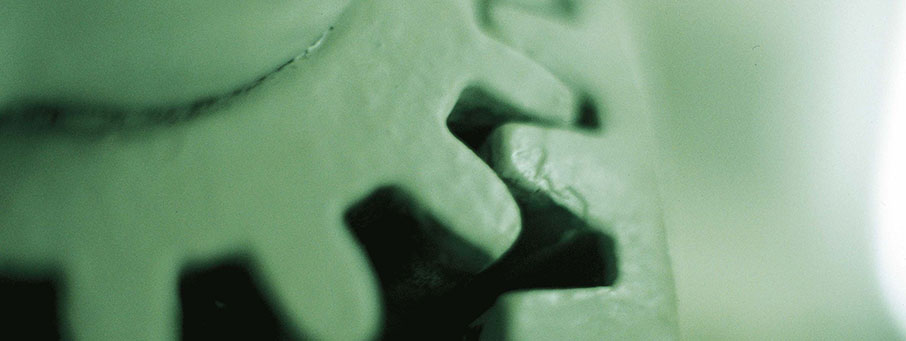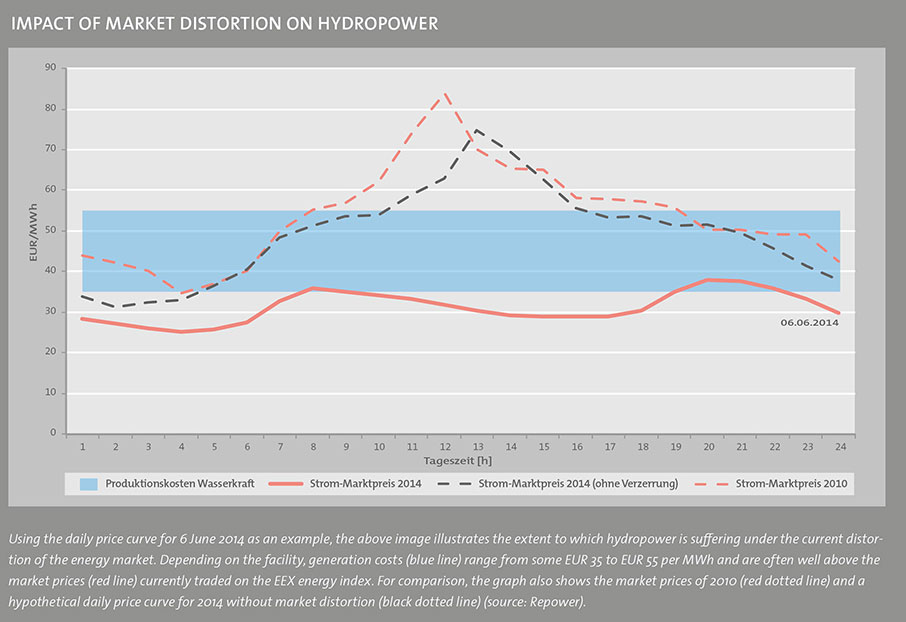- Semi-annual report
- Financial report
- Interim consolidated financial statements
- Notes to the interim consolidated financial statements
- Company information
- Principles of consolidation
- Changes in consolidation
- Impairment or impairment reversals of assets
- Cash and cash equivalents
- Change in net current assets
- Additional information on financial instruments and positions measured at fair value
- Assets and liabilities held for sale
- Segment reporting
- Other disclosures
- Contingent liabilities and guarantee obligations
- Estimation uncertainties
- Events occurring after the balance sheet date
- Graphics
- Archive
Where is Switzerland's hydropower heading?

Winning feature in danger
Hydropower is the trump card that Switzerland holds in terms of energy generation. But it will take the right overall conditions to play it when implementing energy transition.
WHERE IS SWITZERLAND'S HYDROPOWER HEADING?
Cheap, efficient, renewable: hydropower makes sense. But the current market environment stands in the way. This is a paradox that neither Switzerland nor Europe can afford. A solution must be found.
With approximately 36 terawatt hours of electricity generated annually, today almost 60 per cent of Switzerland's electricity comes from hydropower. Until the 1970s – before the first nuclear power plants came on stream in Switzerland – hydropower generated almost 90 per cent of Switzerland's electricity. There are about 600 hydropower plants, not including the smallest ones. These impressive figures show that hydropower is a fundamental resource for Switzerland, and especially important for its mountainous cantons. Switzerland's water resources can be turned into energy thanks to the country's natural environment. Hydropower reduces its dependence on other countries and makes an important contribution to supply security. Hydropower is renewable and sustainable, with concessions of up to 80 years and a service life well beyond that. It is widely accepted by society, and one of the cheapest forms of energy generation over its entire productive cycle. In addition to its importance for Switzerland as a centre of energy, the use of hydropower generates gross added value of about CHF 2.4 billion per year, making it an important component of the economy. The construction and operation of hydropower plants create jobs and added value, not to mention work orders for small and medium-sized companies, including those in peripheral and mountainous regions.
Thanks to their ability to create control capacity, storage and pumped storage plants are highly flexible, able to balance out generation fluctuations from wind and solar plants and essential for the stability of the grid. It is this flexibility that makes the development of energy systems in the direction of the increased use of new renewable energies possible in the first place.
GENERATION COSTS ARE SOMETIMES HIGHER THAN DISTORTED MARKET PRICES
In terms of technology and the environment, hydropower is consequently the ideal cornerstone for energy transition. There is some serious doubt about the third leg in the triangle of environment, technology and profitability, however. Electricity from (large) hydropower plants can no longer keep up with market prices, which have become massively distorted by feed-in tariffs for wind and solar energy and increasingly by capacity payments for the necessary reserve power plants. In addition, hydropower is also being burdened with increasing water rates, taxes and other concessions demanded by the public sector. All this has led to the paradoxical situation that hydropower, which is so important and which is highly competitive under market conditions, has lost enormously in value. The income that it currently generates is so low that electricity generation from major hydropower plants is being rendered virtually unviable (see chart page 7). This is due, among other reasons, to subsidies being paid for individual technologies.
New renewable energies should continue to be developed. There is no doubt about that. But the way in which they are being expanded and subsidised, while “traditional” renewable energies face huge problems is absurd. In particular, the efficient large hydropower plants, which make up only one tenth of all power plants and yet generate 90 per cent of Swiss energy output from hydropower, are suffering from the current trend. And if existing hydropower plants can no longer be operated profitably, the situation for new projects becomes even more complex. Outstanding projects such as Lagobianco and Chlus, which are well supported by the public and environmental organisations, are not feasible under the current economic conditions. This is despite the fact that their flexible capacities are urgently needed and that the federal government's 2050 Energy Strategy expressly seeks to expand the use of hydropower. Various studies – including those conducted by the Federal Office of Energy and the Swiss Water Management Association – also come to the conclusion that hydropower expansion is hardly possible under the current conditions, which runs counter to the federal government's energy strategy.
CURRENT SUBSIDY MODELS ARE COUNTERPRODUCTIVE
To maintain the enormous value and potential of hydropower, Germany and Switzerland would do well to rethink their current subsidy policies. Compensation models – especially Germany's Renewable Energy Act – produce important disadvantages and they distort the market. Subsidy charges and in turn the overall costs of energy supply have risen enormously for end customers since the subsidies were introduced, and CO2 emissions have increased, not decreased. In addition, there is an increasing social imbalance between owners of land and buildings, who are benefiting from the subsidies and are able to install wind or solar systems, and the rest of the population, who have to bear the costs in the form of high taxes.
A suitable instrument for promoting new renewable energies without putting hydropower at a disadvantage is the quota model (see box), which works in line with the market.
If there is no correction in the current path, the success of energy transition will be seriously called into question. The negative impact on Switzerland, and especially on the mountainous cantons and their enormous reserves of water, would probably become even more acute.
THE QUOTA MODEL
Repower is doing its utmost to boost the role played by hydropower, and welcomes and supports the government's efforts to introduce competition to the renewables sector via a quota model, as has already been successfully implemented in Sweden and Norway. Such a plan involves, at the political level, regularly setting the share of renewable energies that utilities must supply to their customers. The quota model has the following advantages over feed-in tariffs:
- it promotes new renewable energies without diminishing the value of hydropower
- it does not downplay the principles of market-based economics
- it promotes the most efficient power plants and prevents inefficient investments
- it promotes technological development, as it provides an incentive for research
- it gives policymakers the necessary leeway to manage the new capacity
